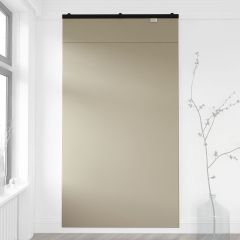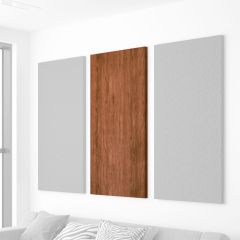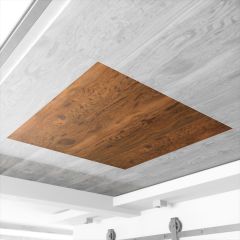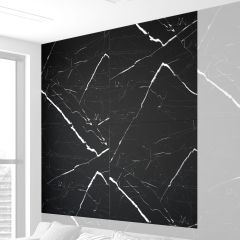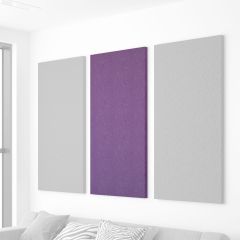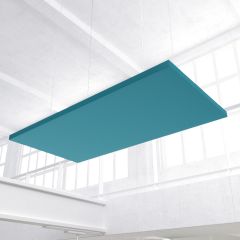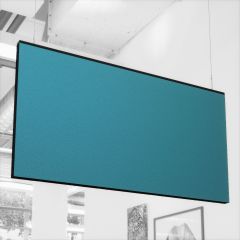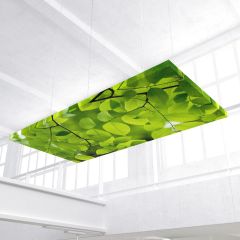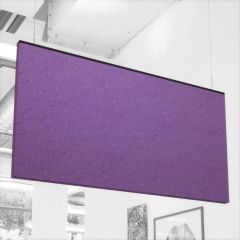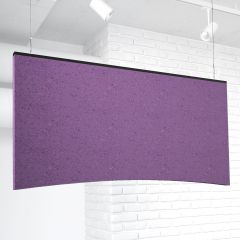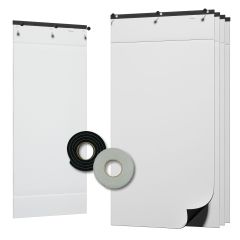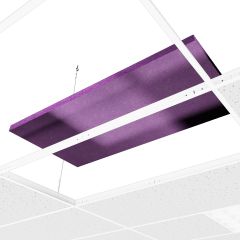STC vs. NRC Ratings
When searching for soundproofing products, chances are you have stumbled across the letters ‘STC’ and ‘NRC.’ You, like most others new to the idea of soundproofing, probably had no idea what these little three-letter acronyms meant. Despite the fact that the abbreviations are simple, the concepts behind these terms are oftentimes hard to grasp.
To make matters worse, the technical terms don’t end there. With talk about decibels, transmission loss, and frequencies, it is easy to get lost in all the jargon. All you really want to know is the difference between sound absorption and sound blocking, as well as which noise barriers will best serve your needs.
Sound Transmission Class (STC)
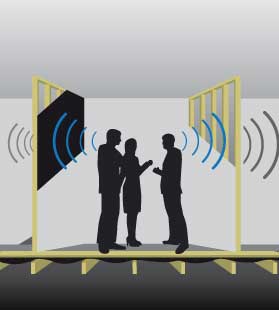
What is STC? STC stands for Sound Transmission Class and is measured to calculate the effectiveness of soundproofing materials in reducing sound transmission between rooms. STC is decibels (dB) reduction in noise a material/ partition can provide. Simply put, it measures how much sound a wall, for instance, will block from getting through the other side. By taking the transmission loss values and testing them at 18 of the most common frequencies (between 125 Hz-4000Hz), a curve is created, which is then compared to the standard STC curves of reference. Whichever curve of reference your curve most closely matches is the STC rating for your specific fixture. For example, if the curve created by one of your walls most closely matches the standard STC 40 curve, your wall will be said to have an STC of 40. The higher the STC rating, the more effective that material is at reducing sound transmission of the most common frequencies.
- Decibels - Decibels, abbreviated as dB, are a simple measurement of how loud something is.
- Frequency - Frequency, by definition, is the measurement of the time or musical note of the sound.
- Transmission Loss - Transmission loss in the measurement of the volume (dB) difference on either side of the wall.
Noise Reduction Coefficient (NRC)
A NRC is an average rating of how much sound an acoustic product can absorb — in other words, how much quieter a product can make your space. Like a sponge absorbs water, an acoustic product absorbs sound and the NRC tells us just how much sound those products can soak up.
NRC is measured on a scale that ranges from 0 to 1. An NRC of 0 means that the product absorbs no sound. An NRC of 1 means that the product absorbs all sound. The higher the NRC, the better the product is at soaking up the sound.
Calculating the NRC for an acoustic product is no small task. The following is an explanation of how our products are tested for NRC using the ASTM Standard Test Method for Sound Absorption.
- A special sound test lab room specifically designed for measuring sound absorption is equipped with a microphone and fancy equipment that measure sound frequencies.
- To begin the test, an initial measurement is taken by transmitting a noise signal into the room and the equipment takes a measurement of how much sound was absorbed.
- Once the initial measurement is taken, the product being tested is placed in the same test lab, and the sound absorption is measured at four different frequencies.
- The NRC is calculated by averaging the various measurements and rounded off to the nearest 0.05.
Featured Products
Ready to hear the difference? Reach out to one of our highly knowledgeable Acoustic Specialists at 1.866.505.MUTE or fill out a Free Room Analysis Form for assistance in finding your sound solution!




